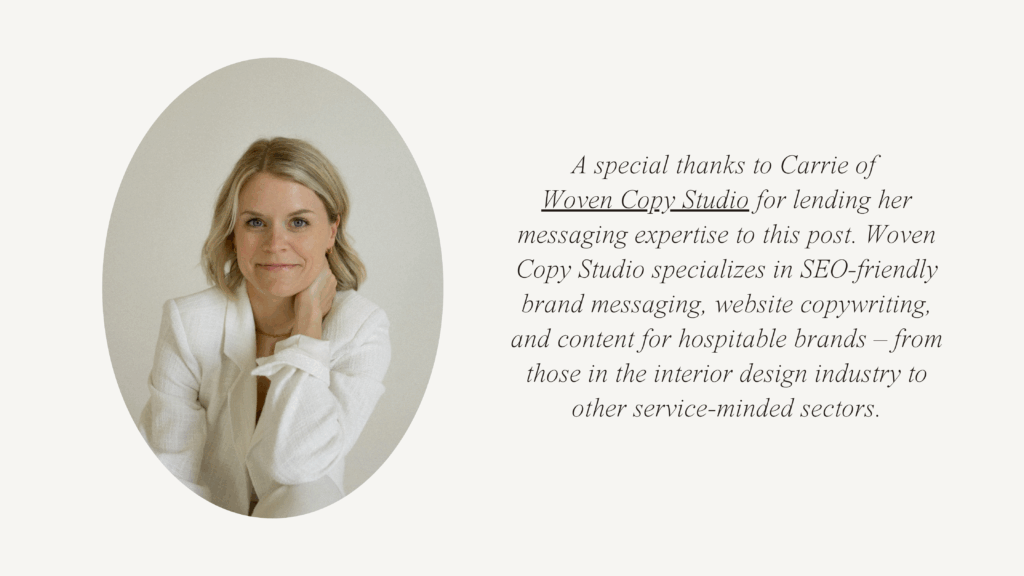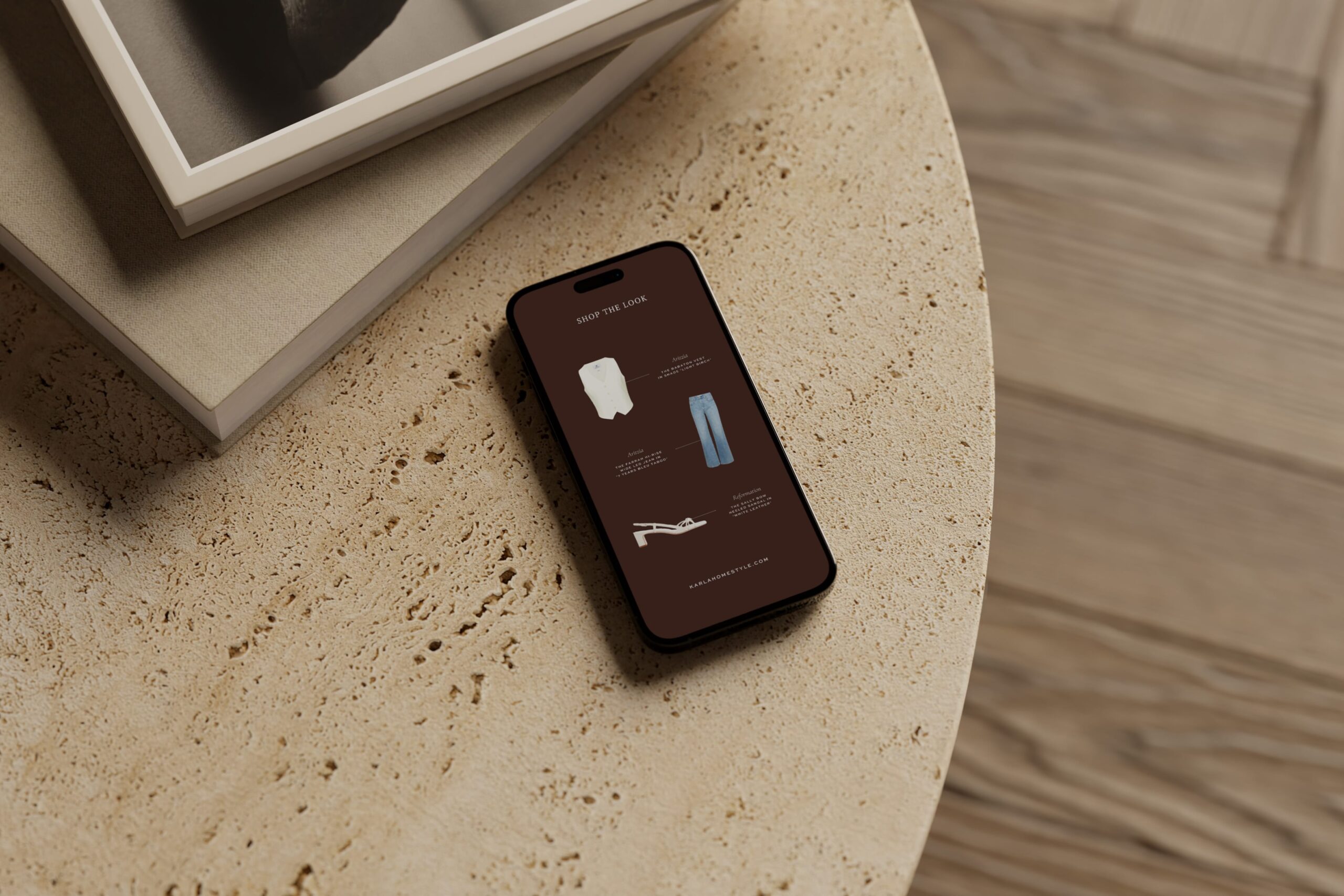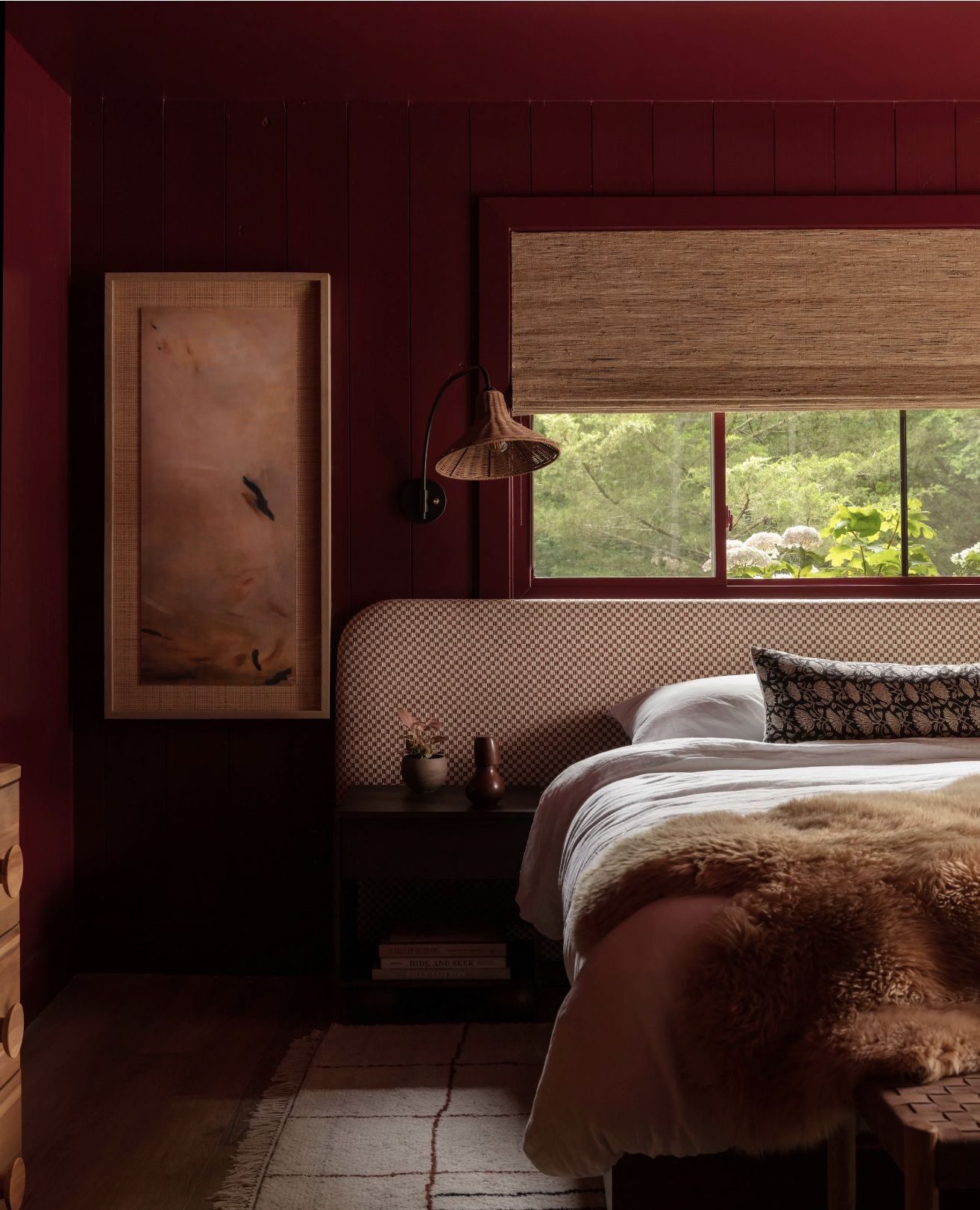You’re well aware that the interior design industry is saturated with brands that sound remarkably similar. “Luxury meets comfort.” “Timeless elegance with modern functionality.” “Creating spaces that reflect your unique style.” “Your home should tell your story.”
If you’ve heard one, you’ve heard them all.
While there’s absolutely nothing wrong with any of these, consider this – you pour so much into creating distinctive spaces for clients. Yet when it comes to articulating your own brand, you might find yourself reaching for the same well-worn phrases that populate every other designer’s website and marketing materials.
The result? Your POV and verbal style start to blend in with the rest, making it difficult for potential clients to understand what makes you different – and the one they absolutely have to work with.
But Can’t I Just Use AI? Why Custom Brand Messaging Matters
With AI tools becoming increasingly sophisticated, many creatives are tempted to let ChatGPT or similar platforms handle their copywriting needs. Can these tools be great starting points and save you time in the long run? Yes. However, they can’t capture the nuanced voice and specific expertise that makes your brand what it is. Especially if you’re not well-versed in how to use it in your favor.
Here’s why: tools like ChatGPT and Claude learn from all the copy that’s already out there, so they naturally tend to recreate what’s been written a hundred times before. Without specific guidance, they’re likely to give you the same “luxury design” and “timeless elegance” language that’s already overwhelming the market – contributing to even more noise.
On the other hand, working with a copywriting expert is different. They take the time to understand what makes your design approach special, figure out what keeps your ideal clients up at night, and capture the real transformation you create for people. Plus, they bring that fresh outside perspective that’s so valuable when you’re too close to your own work to see it clearly. That human understanding is just something AI can’t replace.
We’ve been hearing more and more questions about this from our Duelle Made community, and it’s clear there’s real interest in how to approach it thoughtfully. This guide is our way of opening the door to those conversations and helping you discover what could be possible for your own brand story.

Copywriting Strategies For Showing Up Fully As An Interiors Brand
1. Establish Your Tone Of Voice For Confidence & Clarity
This might sound like a fancy copy strategy, but really, the best place to start is to be more of who you already are. Think about how you naturally talk to friends or explain your work to someone new. Don’t feel like you need to sound “more professional” or use bigger words. That’ll only make writing feel forced and awkward later on.
Are you more polished and professional or emotive and down-to-earth? Summarize your brand’s voice in three keywords, ideally. Maybe you’re thoughtful, warm, and intentional. Or polished, inspiring, and approachable. These descriptors will give you a foundation to refer back to when you start weaving together the core messaging pieces for your brand.
The whole point is to let people see who you really are through your words. When you write honestly, the right people will start to feel like they know you, which makes them much more likely to want to work with you.
2. Sit Down To Journal With Pen & Paper
Set your phone and computer aside. And just go back to the basics. It can sometimes feel a little uncomfy – especially in our digitally saturated world, and if it’s not part of your routine (yet). But trust that this exercise guides you to tap into those more intuitive, honest, personal reflections.
Consider sitting down after everyone in your house has gone to bed, lighting a candle, turning on some music that grounds and inspires you, and seeing where your thoughts take you. Here are some prompts to get you started:
- What do you wish more people knew about you as a person? As a designer?
- What’s your philosophy on how people should live in their homes?
- What makes your design process special? What moments bring you the most joy?
- What transformation do you aspire to create through your work?
These reflections often reveal the core threads that weave through all your messaging – the consistent values and perspectives that make you who you are and your work what it is. Trust what comes from this practice, even if it feels vulnerable or different from what others in your field are saying and sharing.
3. Move Beyond Conventional Topics Of Conversation
Going back to our earlier point, the interior design industry is swimming in copy-and-paste language. Brands claim to offer “luxury,” “timeless design,” and “personalized service.”
These are all great things. But when everyone is saying the exact same thing (or some subtle variation of it), something interesting happens – people just glaze over. It’s the complete opposite of what your project imagery accomplishes.
So your invitation is to look beyond these surface descriptors and explore the deeper impact of your work. Instead of claiming to create “beautiful spaces,” you might share how you “bring beauty and enjoyment to everyday living.” Rather than promising “luxury,” you could describe how you “curate spaces that whisper sophistication through carefully chosen textures and unexpected colour combinations.”
Your past clients’ testimonials often hold these deeper truths. Look for the moments they describe the outcome beyond the physical beauty – the peace they feel, the way their home now supports their lifestyle, the pride they experience when hosting friends and family. These stories reveal the true value you bring.
4. Create Sensory Stories With Your Language Choice
Building off the last point, you’re a visual storyteller – through and through. The same sensitivity that helps you create impeccable interiors can breathe life into your written communications, building experiences that potential clients can feel before they ever pursue your work for themselves.
Rather than simply listing generic deliverables for your services, craft a summary that invites readers into the sensory experience of one of your spaces. Describe the weight of quality in their hands – the substantial feel of the brass door handles you’ve selected, the way the custom cabinetry will close with that satisfying, solid sound that speaks of craftsmanship. Let them envision sinking into the living room you’ve designed, where the sofa’s deep cushions embrace them after a long day, and the carefully curated art collection creates conversations with guests who linger longer than expected.
This storytelling approach honours the emotional intelligence that likely drew you to design in the first place. You understand that homes are more than their physical elements – they’re the setting for everyday life. When your words reflect this understanding, potential clients begin to envision not just a prettier space, but a richer way of living.
5. Refer Back to Your Foundation When Writing Marketing Content
Many designers find writing about their work challenging, not because they lack things to say, but because they haven’t yet established a clear, reliable foundation from which to create content. When you’ve laid this messaging groundwork, sharing your work and POV becomes as natural as discussing your latest project with a dear friend.
Often, when working with a messaging strategist, you’ll receive a digital guide with your core verbal strategy – this includes your brand bio, founder bio, manifesto, values, process, and even a copy bank of on-brand words and phrases. With these elements, writing blog posts, email newsletters, and Instagram captions becomes a natural extension of your business rather than a dreaded task that leaves you staring at a blank caption space or page.
Something to keep in mind here is that while your website messaging might be more polished and professional, your social media content can be more relaxed and conversational. Your email newsletters might fall somewhere in between – warm and personal, but still informative and valuable. The key is understanding that different platforms serve different purposes and allow for different levels of formality, even while maintaining your core voice.
6. Leverage AI to Work in Your Favour
While AI shouldn’t replace strategic thinking about your brand messaging, it can be a supportive partner – when used correctly. A great way to approach this is training tools like ChatGPT and Claude to understand your unique tone of voice and perspective.
Instead of asking for generic interior design content, provide detailed context about your brand personality, your ideal clients, and the specific transformations you create. This allows AI to expand on your initial POV – beyond what you might have already considered – which you can then refine and personalize.
Going back to that pen & paper strategy – yes, it’s definitely easier to just open ChatGPT and ask it to write your caption or blog post. But when you start with your own thoughts on paper, you’re more likely to end up with something that sounds like you rather than every other AI-generated post out there.


Practical Applications: From Projects to Process
Naming Your Projects: Many designers put pressure on themselves to come up with creative project names. Our best advice is to go back to the basics. Yes, the way you name and describe your projects offers another opportunity to highlight your thoughtful approach and brand personality. But don’t push yourself to go with something that doesn’t feel natural or sustainable.
Maybe instead of generic descriptors, consider names that hint at the story behind the transformation – what your clients were seeking to achieve and why they picked a specific concept. “The Sunday Morning Kitchen” could evoke the leisurely breakfast gatherings that inspired the design, while “Hideaway on Elm Street” speaks to both location and the peaceful retreat you created.
Respecting What Your Reader Cares About: Your website and marketing materials should provide exactly the depth needed to help potential clients understand your value and feel confident inquiring to learn more. This might mean a comprehensive service page that walks readers through your hands-on process, or it could mean more concise sections that capture attention quickly and invite deeper conversation.
Length matters to a certain extent (e.g., Google recommends pages no less than 300 words). But the relevance and helpfulness to your ideal client is what counts. Consider the questions you get asked most frequently. Then trust your instincts about what information will best serve those you hope to work with.
Sharing Your Process as an Experience: Your design process is so much more than a series of obvious steps (e.g., Consultation, Design, Implementation). It’s a personal experience of collaboration, discovery, and transformation. When describing how you work, focus on what clients will encounter at each stage and the outcomes they can anticipate. Keep the focus on them every step of the way. This helps bring them into the details and envision what’s ahead when working with you. Some examples of designers who do this well – Kayla Daniels, Cottage & Key, and Meghan Jay.
Know When To Pursue a Copy Collaboration
Creating aligned brand messaging is both an art and a skill – and many see the value in seeking professional guidance, just as your clients seek you for design expertise. It’s one of the best ways to invest in your interior design business.
So you might be wondering: who should you hire first – a copywriter or brand designer? Ideally, these creatives would collaborate from the very beginning of your project to create a cohesive brand experience. But the good news is there’s flexibility depending on where you’re at in the process (and if your plans changed!).
For example, we’ve had past clients who initially thought they’d be comfortable handling the writing process on their own. Once we got further into the project, it was a different story, so they received intensive-level support through a Site Copy Audit & Edit. It’s a learning experience any way you look at it!
Interior designer Melanie Hay reflects on outsourcing her brand messaging and website copy:
“I had no idea how much value Carrie’s words would add to my online presence and how her thoughtful creative process would bring clarity to my story and brand values, in a way that felt natural and unforced. I feel a sense of calm, clarity, ease and confidence in my business now.”
Your voice matters in this industry. Your perspective, your process, and your particular way of creating exceptional spaces deserves to be expressed with the same thoughtfulness you bring to every design. When you honour your authentic voice and communicate with genuine care for your ideal clients’ needs, the right people will naturally be drawn to work with you.
________
If you’re looking to hire a collaborative team who has your best interests in mind, Duelle Made and Woven Copy’s partnership is one to write home about. Learn more.



